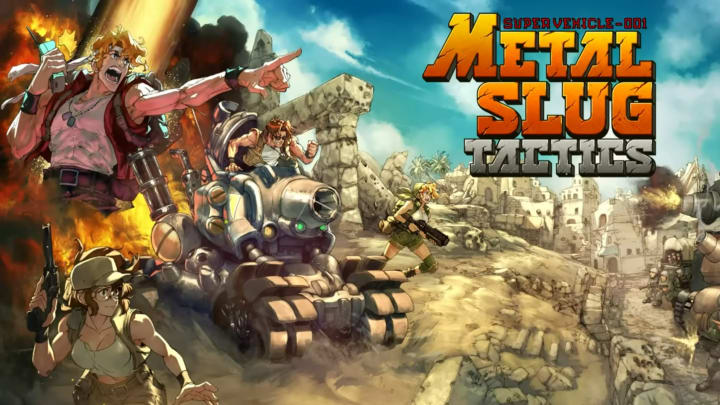Metal Slug Tactics preview: A confusing adaptation with a strong base

Metal Slug Tactics confuses me. I don’t mean in some metaphorical way, or that the action game spinoff is particularly complex. I mean at several points during the demo, I stopped and just wondered… why? Dotemu’s tactical adaptation of the Metal Slug series has some smart and inspired ideas at its core, but they’re perpetually in conflict with a handful of baffling mechanics that make each mission more frustrating than it should be.
Metal Slug Tactics is light on story. General Morden escaped from prison again, and it’s your job to put him back, again. He only just got out, but he’s somehow managed to get three mega weapons set up around the map. Making a ruckus in each region will bring his supporters out, so you can deal with them and the weapons all at once. It’s fluffy and over-the-top, very much in the vein of older Metal Slug games, and that’s all it needs to be.
Each region has a map filled with several randomly generated levels, each with randomly generated rewards and conditions. Mission objective variety and general map layouts are so fresh that, in the two hours or so I played, it never felt like Tactics grew stale. And when it does get a bit same-y, you can unlock higher difficulty options to make it interesting again.
Metal Slug Tactics’ maps have several layers of elevation, similar to Final Fantasy Tactics or Triangle Strategy, but one of the strangest mechanics is how height affects your combat options. You can only attack enemies on the same level as you. It took me a while to wrap my head around the fact that a sharpshooter can’t aim down from a roof and that a simple ledge is enough to stump a tank with incredible range.
The cover system is odd as well. Blue-colored tiles on the map – usually attached to a small wall or sandbag feature – offer cover, which reduces the amount of incoming damage you receive. You get that reduction no matter what direction the damage comes from, so someone can literally shoot you in the face, and you feel nothing as long as there’s a wall behind you. You have to approach video games, and especially turn-based games, with a healthy measure of suspended belief, but the idea that cover at your back offers blanket protection from any damage is a bit much.
There’s a vague resources system, where Tactics encourages you to “move over dark-colored tiles” to pick up… things? I guess ammo is just lying around, but I’m not really sure what that’s all about. You can also dodge, sort of. Characters gain a dodge stat as they move, so it starts from zero and may end up between two and four or higher depending on how many tiles you move in that turn. That number decreases how much damage you take, which is nice in practice, but it encourages a lot of pointless and sometimes even counterintuitive movement that gets in the way of actual strategy.
It just seems like a lot of artificial strategy to give Metal Slug Tactics a unique identity, but it doesn’t need that. Underneath the annoying, baffling decisions, Metal Slug Tactics has a strong grasp of what makes tactics games good.
Each character has a basic weapon, a stronger weapon you can only use limited times before recharging it at specific points, and, eventually, a selection of unique actions that fuel up as you gain adrenaline, a resource that builds naturally just by engaging in combat. Having two kinds of guns or grenades sounds basic, but there’s a surprising amount of depth when you consider weapon range, character positioning, and how one character’s skills might influence the next one’s attack.
That’s before even thinking about sync attacks. These combined assaults trigger whenever you attack an enemy within hit range of an ally, sort of like the triangle system in Triangle Strategy, except your allies can also hit you. I like to think my friend wouldn’t throw a grenade at my head and consider it helpful if it happens to explode an enemy as well, but maybe Metal Slug brains just work differently. Anyway, weird character behavior aside, it’s a (mostly) smart system that encourages careful planning.
Dotemu went the quirky route with enemy variety and animations, and it gives Metal Slug Tactics a welcome extra infusion of personality. You’ve got your usual gun-toting, bomb-lobbing foes, sure, but there’s also a squad of sword-throwers who belch up new swords after throwing them at you, and half a dozen or more other little weirdos with unusual attack patterns. Even when you figure out their patterns and the element of surprise is gone, seeing their detailed and bizarre animations is still a delight.
Despite how intensely annoying I found Metal Slug Tactics’ more questionable design choices, I mostly enjoyed my time with the Steam demo. There’s a strong base to work with here, and I’m eager to see what Dotemu has in store with the full release.
